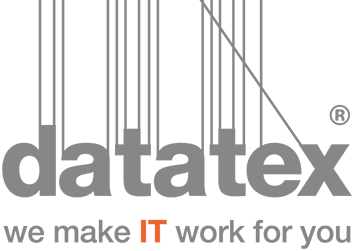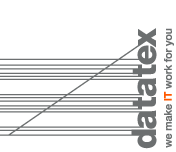
Textile industry and ERP. History and new opportunities
Interview with MAURIZIO DESIO – Datatex Managing Director

At present Datatex is the world’s leading supplier of ERP solutions for textile industries and owns the software NOW, the world’s best-selling vertically integrated management software. Since 1987 Datatex supports from an IT point of view, all the main textile companies around the globe. 35 years have passed since then. How has the textile sector changed in all these years, and how has Datatex’s product offer evolved to keep its innovative and propulsive capacity intact?
In 35 years, the world has changed, and the textile sector has undergone deep evolutions. I think there is an image that could symbolize this change: the environments where the textile production takes place. Whoever entered a textile mill years ago, had to face a bad environment, dirty, oily and noisy, in big and unappealing sheds. Today, whoever enters a textile company has almost the feeling of getting into a modern hospital: every detail is accurate, the environment is clean and silent, steams and smells are minimized, the buildings are designed with a very smart layout, paying attention both to functionality and aesthetics.
The technological progress – along the entire supply chain (from looms, that are far less noisy, to printing, which is a cleaner process if compared to the past) – has deeply transformed the textile industry, radically modernizing it also in terms of software and information systems. If in the past people used to work on screens with green phosphorus and with rigid systems, not so flexible and not parametrizable, today we work with software that is at the same time much easier to use and more complex to manage internally. They can adapt themselves quickly and spectacularly to all the needs of different companies, using immediate and user-friendly graphical interfaces.
Datatex has always kept up perfectly, I would say a step forward, regarding these important evolutions. As in the 80s and 90s, we were at the forefront in what IT used to offer to textile industries; the same way in the early 2000s till now we have always been able to reach the market with brand new products and solutions. This innovation process renews itself relentlessly: every year we offer new software modules and new services for the textile sector.
Datatex has offices in seven countries (Italy, USA, India, Israel, Switzerland, Serbia, Germany) and customers in 45. Which are at present the geographical areas, the markets, and the countries that may have the highest growth potential in the textile field?
We shall start with a consideration: for many years we are talking – in Europe and the USA – about a crisis of the textile sector; but this is a wrong perception if we think of it from a global point of view. The increasing global population in the last decades, up to a total amount of 7.7 billion people in the world, led to a dizzying growth of the overall textile need, in terms of clothing, technical textile and its uses in different fields (e.g the automotive). The textile industry is a bit like the food one: the more people there are, the more we produce and sell. But where do we produce and where do we sell? This is the real question. Nowadays, the strategic areas for textile are firstly China, India, Bangladesh, Pakistan and South-East Asia and secondly Africa and South America.
Why? Because of two main reasons:
1) The dramatic increase of people in these geographical areas and hence the growth of the request for textile products and clothing; at the beginning just for low-quality ones, but as the quality of life increased and new riches began to rise, they also asked for high quality and luxury clothing.
2) The greater convenience in producing in those geographical areas because of the lower labor costs, due to less strict regulations for sustainability and pollution – compared with USA and Europe, and of the greater willingness and ability of governments to make large investments in the textile sector. This pushed many European companies to delocalize their production, starting from low-level manufacturing processes, and later – thanks to the settlement in Asia of many European technicians and textile managers – with increasing attention both to product quality and sustainability. If we add to this trend, also the fact that in some Extra European countries there are governments directly engaged in investing in the textile industry, deploying resources that no private company could ever have, we clearly understand why today the most interesting areas for the textile industry – in terms of big figures – are outside Europe and in North America.
It is clear that Datatex has well adapted to this evolution: today we are working a lot in Asia, we have a branch in India – Bangalore – that is going very well, and in these last few years, we have also found very important customers in Africa and South America. That said, of course, there continue to be textile excellences in Europe and North America, there are many top-level companies which keep on going very well and through our offices in Italy, Serbia, Switzerland, Germany and USA we continue to follow and closely support European and North America textile companies.
Which are in Datatex history, the most interesting and innovative projects? Which are the most relevant textile companies that opted for Datatex ERP Solutions?
Datatex Software NOW ERP is at present the best-selling management system for textile industries worldwide and it is used by textile companies in 45 nations. It is difficult to quote names without forgetting many others, not less important. NOW is a product that has great scalability (it can be perfectly used by large textile multinationals as well as small manufacturers), it is highly customizable according to the customer’s needs and it is – as far as I know – at present the only existing ERP in the world that can fully cover the entire textile supply chain (spinning, weaving, printing, dyeing, finishing, packaging).
However, to answer your question I’d like to make some names, choosing – among Datatex customers – some realities that are particularly meaningful in my opinion, without diminishing of course the other high profile customers that we have: Protela (big textile company form Colombia, one of the most important textile mills in South America); Verdhman Group (textile giant from India, with more than 27000 employees and a turnover of more than 1 billion USD); Tayal (is the new and innovative textile company from Algeria, founded thanks to a joint venture between the Algerian government and a Turkish company); Sanko (very important textile mill from Turkey); Parkdale Mills (historical company from US, world leader in spinning); Calzedonia Group (Italian multinational with 2.3 billion turnover; with Calzedonia Datatex also cooperated at IT level to open the new establishment “FLASH SRB”, a state-of-the-art textile plant which is a great example of industrial innovation, automation and integration of all production cycles); Klopman (international leader in the field of fabrics for work clothing, headquartered in Italy, Frosinone); Opperman (important German textile multinational, with plants in Germany, China, Vietnam, Slovakia, United Kingdom and USA).
Datatex lab is in Milan, in a country that plays a fundamental role in the textile and fashion world, but which is going through a not particularly positive phase. What future do you see for the Italian textile and the manufacturing excellences Made in Italy?
For the abovementioned reasons, today the textile sector in Europe (and in Italy) is no longer a strategic field in terms of quantities and turnovers. That’s a fact, but it doesn’t mean that for me the Italian textile has no future at all. I think exactly the opposite, and I am going to explain why.
It is no coincidence that Datatex managed to impose itself as a leading company in IT for textile at a global level. This goal has been achieved on one hand thanks to the skills of our partners from Israel, who are world citizens and gave an important boost to our internationalization; on the other hand, thanks to the fact that our NOW ERP is an Italian product, developed and continuously innovated in our laboratory in Milan. The world image of Italy, in the textile and fashion field, is at present very positive: Italy in the textile-fashion industry stands for high quality and the fact that our software made for this sector is a 100% Italian product, is a wonderful business card for us around the world.
What does it mean? It means that Italy has a future in textile, if it focuses on product innovation and market top levels, in a period when this makes perfect sense, and it is consistent with the market trends. Today there is a massive growth in eco-friendly textile products capable at the same time of being less polluting and of having a higher quality level, this for the fashion world. Then there is a strong demand for technical textiles with particular features, for professional use (e.g. new researches on new fabrics with antibacterial and antiviral properties) and also for the general public (quoting some historical example of big innovations in the 70s- 80s, such as fleece and gore-tex). Nowadays this willingness to innovate is back and the Italian textile should focus on that. However, Italian politics should support this sector too, discouraging delocalization, (as Trump did in the USA) and financing textile companies that invest in R&D. The textile industry has a high employment rate, meaning that with the same turnover it employs much more people than other industries. Hence, it is plain to see that supporting this sector is fundamental to let the whole Italian economic system work smoothly.
Lastly, we cannot avoid mentioning the fact that according to some analysts, the Covid 19 pandemic could determine, also in medium-long terms, a crisis of globalization and recovery of local manufactures. There, I take no position because I have no idea if it will be so and don’t have a magic crystal ball!
NOW ERP by Datatex is at present the best-selling vertical management system for textile industries and it is an innovative product, constantly evolving and updated. Why should a textile company choose a specific solution as NOW, instead of a general-purpose ERPs of the big global IT players?
Datatex invests every year more than 10% of its turnover in R&D, it has always been working for the textile industry only; hence Datatex can select all the best practices and include them in its products. This is not an easy task for companies who offer general-purposes and traditional ERP systems, even if they are multinationals or IT industry giants. Datatex technicians and sales agents have specific textile skills and know-how that others don’t have, thus being able to fully support the customer in all its needs. I can say that it is quite impossible to achieve for a software house that works on many different fields and is not verticalized.
When a textile manager talks to a Datatex technician, our technician understands perfectly his needs. We are more specialized than the others, we can provide 360 degrees solutions to all textile industries along the entire supply chain and for this reason, we are today the best in this business.

